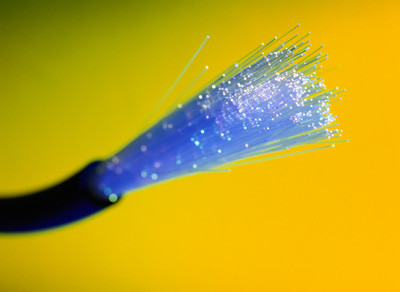The author, a South Sudanese citizen, argues that more effort should be made to look into contracts to ensure that South Sudan is not being taken advantage of.
On December 5, 2014, Ugandan President Yoweri Museveni ordered Prime Minister Ruhakana Rugunda to sort out the mess within the fiber optic project being implemented by Huawei technologies to link Uganda’s government agencies to other East African countries. In the letter, Museveni mentioned that he had received complaints from his auditor general about the use of inferior cables and the possible inflation of the cost by more than $41.9 million.
Museveni writes in the letter, “Some time ago, a Chinese company known as Huawei started building an ICT backbone for Uganda which at that time was still using the satellite link for telephones and other forms of data transmission. Using satellite for telephones is two times more expensive than using the ICT backbone and the undersea cable… Apparently the Auditor General wrote back to me on the 20th of June 2013 but I only saw the letter on 5th December 2014 pointing out that the project was over priced by US$ 41 Million etc. and recommending certain rectification. I have now received complaints that EXIM bank of China is approving another US$ 9 million for this company even before the other rectification are done.”
What do we make of this? Why did Museveni take almost two years before getting the Auditor General’s report? Who was hiding it and why? What was the motive? These are not questions for us as South Sudanese to answer but help us to put our own house in order. When you read the Auditor General’s report you will find out that Huawei was allegedly supposed to use different cables than those they ended up using. Huawei used an inferior type of cable – G-652B – instead of G-655 that Uganda would need to transmit data. The report says that G- 652B is vulnerable to attenuation and dispersion when used for distances exceeding 80 kilometers. The money that Uganda used to fund the project is a $106 million loan from China.
How is this information relevant to South Sudan?
The same company that has been charged by the Ugandan government with potentially inflating prices and using inferior equipment is also implementing similar projects in our country. Huawei is one of the Chinese companies implementing priority projects with funding from EXIM Bank of China, including a 1,607 kilometer fiber optic project being implemented by the Office of the President. (Why the Office of the President gets involved in the work that is supposed to be done by the Ministry of Telecommunications and Postal Services is a story for another day.)
But this $200 million project must be scrutinized lest we are shortchanged like what seems to have happened in Uganda. We must not wait for the project to get finished before we audit it to establish the facts. For instance, with 1,607 kilometers of cable worth $200 million means that the unit cost per kilometer is $124,455.5. Is that price inflated when compared to the region where other projects are being implemented?
For example, for the 2,118 kilometer fiber optic cable installed by the same company, Uganda is spending $50,047.2 per kilometer. Why the huge disparity? We need to know these details beforehand so we can assure our struggling country is not being defrauded. I have learned that the government is, in fact, in the process of auditing some projects because they suspect that there were some discrepancies during procurement of the contractors. This is the right thing to do, except all of the projects must be reviewed. Otherwise, Uganda gives us a very important lesson that we out to learn from in order to avoid becoming victims.
The writer, a concered South Sudanese living in Juba, can be reached at sevenlomole@gmail.com.
The views expressed in ‘opinion’ articles published by Radio Tamazuj are solely those of the writer. The veracity of any claims made are the responsibility of the author, not Radio Tamazuj.




